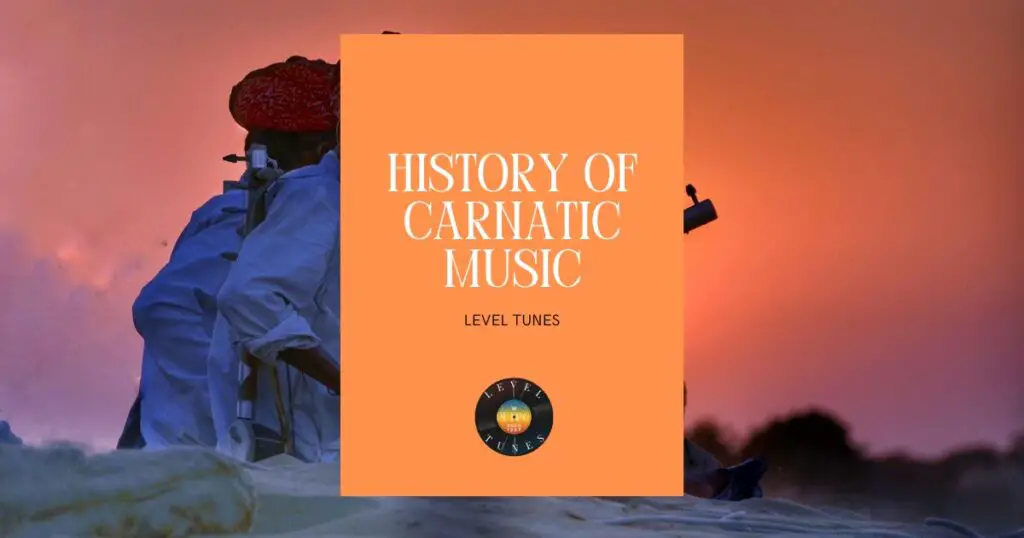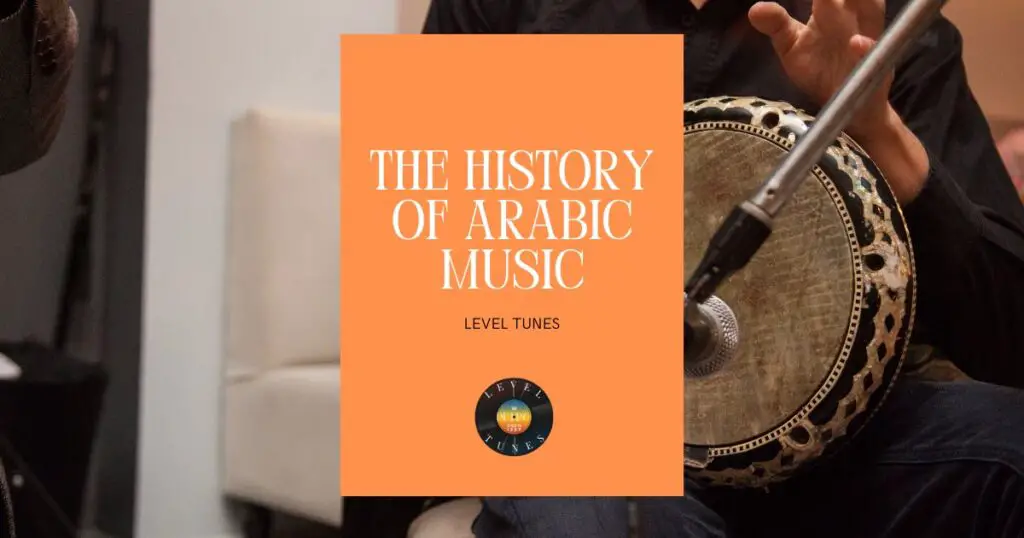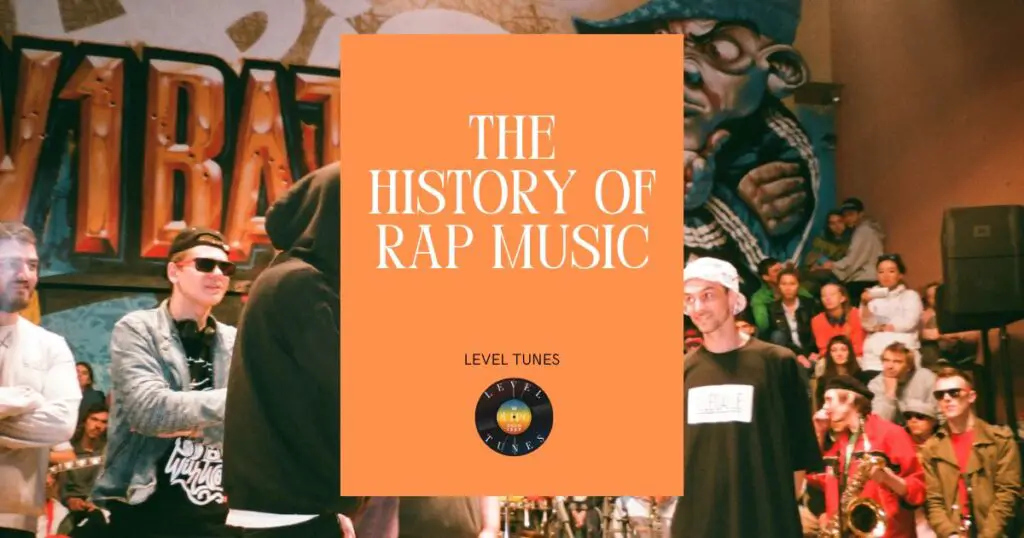Carnatic music, a mesmerising form of classical Indian music from South India, has an incredible history that spans centuries and carries deep spiritual connotations.
Rooted in the traditions of ancient Hindu and Buddhist cultures, this captivating musical genre boasts complex rhythms and melodies which showcase the talents of composers such as Tyagaraja, Muthuswami Dikshitar, and Syama Sastri – collectively known as the Trinity of Carnatic Music.
Join us on an enriching journey through time as we unravel the intricate stories behind this fascinating art form that still resonates today.
Key Takeaways
- Carnatic music has deep roots in the ancient Hindu and Buddhist traditions of southern India, making it a musical form that has evolved over thousands of years.
- The Trinity of Carnatic Music – Thyagaraja, Muthuswami Dikshitar, and Shyama Sastri – are widely regarded as the most important figures in Carnatic music history. Together they created several hundred compositions that continue to be celebrated by musicians and music lovers alike.
- Carnatic music is esteemed for its complex melodic structure, intricate rhythmic patterns, and use of improvisation techniques. The melodies in Carnatic music are pre-composed based on ragas (melodic modes), which have specific rules about how the notes should be played while rhythm plays a vital role using complex rhythmic cycles or tala systems to create beautiful musical phrases.
- Through constant innovation and reverence towards tradition, Carnatic music evolved into one of India’s most cherished cultural treasures that continues to captivate not only enthusiasts but also curious listeners around the world with constantly evolving genres like “Carnatic Fusion”.
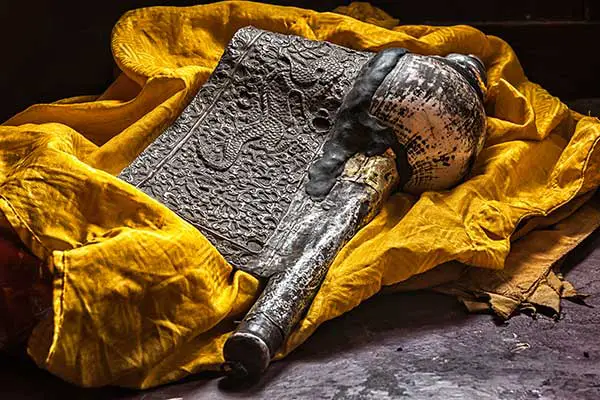
Origins And Influences Of Carnatic Music
Carnatic music has its origins in the ancient Hindu and Buddhist traditions of South India, with influences from the development of South Indian music and integration of Islamic and Western musical elements.
Ancient Hindu And Buddhist Traditions
Carnatic music has deep roots in the ancient Hindu and Buddhist traditions of southern India, making it a musical form that has evolved over thousands of years. As part of its rich heritage, Carnatic music is heavily influenced by concepts such as meditation and spirituality found in Vedic scriptures.
For instance, let’s consider the critical role played by the sacred sound ‘OM’, which is closely associated with human history’s genesis and connected to Carnatic music.
This primordial sound was often used in these ancient compositions to invoke divine energy or delve deeper into spiritual realms. Such strong connections between sacred sounds and spirituality highlight how intertwined Carnatic music is with the philosophical teachings present within these age-old religious traditions.
The Development Of South Indian Music
The development of South Indian music can be traced back to ancient times with deep connections to Hindu and Buddhist traditions. This serves as the foundation for what we know today as Carnatic music, a beautiful form that has retained its purity throughout centuries of evolution.
During its journey, Carnatic music witnessed numerous transformations and adaptations while remaining true to its core principles. For instance, integrating elements from Islamic and Western musical traditions added a unique flavour without compromising the essence of this classical art form.
Integration Of Islamic And Western Musical Elements
One significant aspect of Carnatic music’s evolution is the integration of Islamic and Persian influences, which played a pivotal role in shaping its unique characteristics.
In particular, these influences led to the development of two distinct styles within Indian classical music – Hindustani and Carnatic.
The fusion between traditional Carnatic music and Western elements has given birth to a captivating genre known as ‘Carnatic Fusion’. This modernized form marries complex melodic patterns and rhythmic intricacies found in Indian classical music with jazz improvisations and popular Western tunes.
A fine example would be Grammy award-winning musician Ravi Shankar’s collaborations with George Harrison of The Beatles fame.
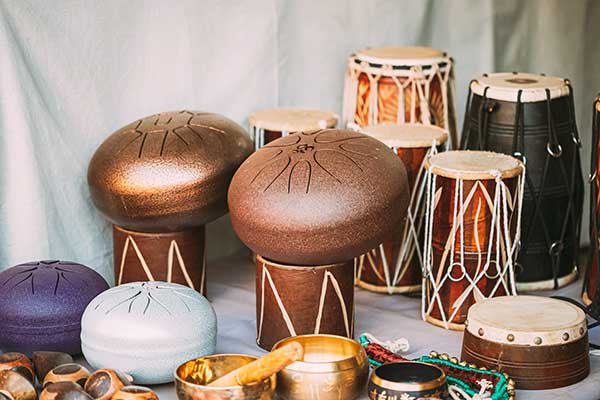
Key Characteristics Of Carnatic Music
Carnatic music is esteemed for its complex melodic structure, intricate rhythmic patterns, and use of improvisation techniques.
Melodic Structure And Rhythmic Complexity
One of the key characteristics that make Carnatic music unique is its elaborate melodic structure and rhythmic complexity. The melodies in Carnatic music are pre-composed, unlike in Hindustani tradition, where they are typically improvised.
The intricate melodic patterns are often based on ragas (melodic modes), which have specific rules about how the notes should be played.
Furthermore, rhythm plays a vital role in Carnatic music as it uses complex rhythmic cycles or tala systems to create beautiful musical phrases. For instance, Adi Tala is one of the most popular talas used in Carnatic music and consists of eight beats divided into three parts- Ta Ka Dhi Mi TaKaJoNa.
Overall, when you listen to a performance of Carnatic music you quickly realize that there is an almost limitless combination available due to its rich melody and intricate rhythm structures making for an immensely satisfying experience for any classical musician or anyone interested in Indian traditional arts and culture.
Use Of Improvisation And Importance Of Poetry
As a music lover, you may be interested in how improvisation and poetry play important roles in Carnatic music. While the composition of lyrics is crucial to this style of Indian classical music, it is often through improvisation that the performer adds their own artistic expression to the piece.
Moreover, poetry holds immense importance in Carnatic music as it provides a deep connection between the composer and performer with the audience. Kritis (a form of musical composition) usually have lyrical poetry at their heart which explores themes ranging from devotion to love and nature.
Influential Classical Instruments
I absolutely love the beautiful sounds that come from traditional musical instruments, especially in Carnatic music performances. Here are some of the most influential classical instruments used in Carnatic music:
- Vocals: The human voice is considered to be the most important and versatile instrument in Carnatic music. Singers use their voices to bring forth a wide range of emotions and expressions.
- Mridangam: A percussion instrument, mridangam produces a deep and resonant sound that accompanies the melody. It is considered to be one of the most important instruments in Carnatic music.
- Ghatam: Another percussion instrument that is used in Carnatic music performances, ghatam is an earthen pot that produces a sharp and crisp sound when struck.
- Kanjira: This small tambourine-like instrument produces a lively and rhythmic sound. It is often used for accompanying dance performances.
- Santoor: A stringed instrument, santoor produces a hauntingly beautiful sound that adds to the overall melody.
- Venu Flute: This bamboo flute is known for its sweet and melodious tone. It is commonly used for solo performances as well as accompaniment with other instruments.
- Tanpura: This long-necked plucked string instrument provides a continuous drone sound that creates an atmospheric backdrop for the melody.
- Veena: Often called the queen of Carnatic instruments, veena is a large stringed instrument with frets that produce rich and vibrant tones. It has been an integral part of Indian classical music for centuries.
These are just some examples of the many traditional musical instruments that have contributed to the rich history and evolution of Carnatic music. I can’t wait to attend my next live performance and listen to their enchanting sounds again!
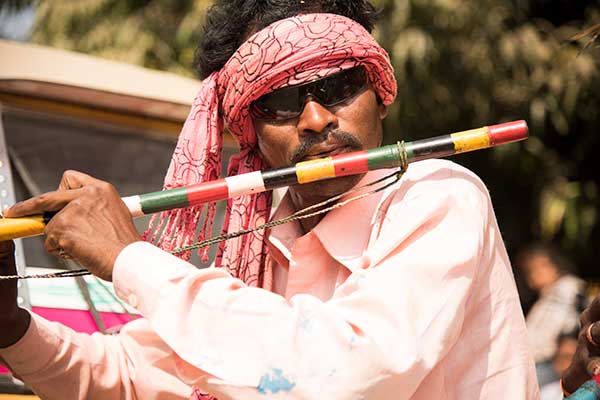
Important Figures In Carnatic Music History
The Trinity of Carnatic music, consisting of Thyagaraja, Muthuswami Dikshitar, and Shyama Sastri are widely regarded as the most important figures in Carnatic music history.
The Trinity Of Carnatic Music: Thyagaraja, Muthuswami Dikshitar, And Shyama Sastri
I’m thrilled to share some information with you about Carnatic music’s Trimurti, also known as The Trinity of Carnatic music. These three legendary figures are regarded as pivotal in the history of Carnatic music and have left an indelible mark on the art form. Here are some important facts about them:
- Thyagaraja Swamy was born in 1767 and is widely regarded as one of the greatest composers of classical Indian music. He composed over 700 songs in Telugu, most notably the pancharatna kritis.
- Muthuswami Dikshithar was a contemporary of Thyagaraja and was born in 1775. He is renowned for composing in Sanskrit and Manipravalam, a combination of Tamil and Sanskrit.
- Shyama Sastri was born in 1762 and was a prolific composer in Telugu. He is famous for having composed many soul-stirring pieces that are still popular today, including Kamakshi Navavarana kritis.
- Together, these three musical geniuses created several hundred compositions that continue to be celebrated by musicians and music lovers alike.
- Their contributions laid the foundation for modern Carnatic music, with their compositions still being taught and performed worldwide.
These fascinating facts give us just a glimpse into the significance of The Trinity of Carnatic Music – Thyagaraja, Muthuswami Dikshitar, and Shyama Sastri – who continue to inspire millions through their timeless works even today!
Other Notable Composers And Performers
As a music lover, it’s important to know about other notable composers and performers associated with the important figures in Carnatic music history. Here are some of them:
- Aruna Sairam – A renowned Carnatic vocalist known for her emotive performances and experimentation with fusion music.
- K.J. Yesudas – One of the most versatile and popular singers in the Indian film industry, Yesudas has also made significant contributions to Carnatic music.
- Lalgudi Jayaraman – A legendary violinist and composer who contributed immensely to the development of Carnatic music through his innovative compositions.
- T.M. Krishna – An accomplished vocalist and activist who is known for his efforts to break down social barriers and promote inclusivity in the world of Carnatic music.
- M.S. Subbulakshmi – A legendary singer whose mellifluous voice and powerful performances have won her numerous accolades and fans around the world.
- Ustad Bismillah Khan – While primarily associated with Hindustani classical music, Bismillah Khan was also a master of the shehnai, an instrument traditionally used in South Indian weddings.
By knowing about these talented composers and performers, you can gain a deeper understanding and appreciation for the rich history and legacy of Carnatic music.

Evolution And Modernization Of Carnatic Music
Carnatic music has evolved over time, incorporating Western musical elements and giving rise to new genres and styles.
Incorporation Of Western Music Elements
One of the most significant changes in Carnatic music has been the incorporation of Western music elements. This change began during the colonial era, primarily due to British influence on Indian society and culture.
As a result, many classical instruments were introduced into Indian music, and Western harmonic concepts such as chords became part of their repertoire.
This fusion of cultures led to an evolution of Carnatic music that eventually created entirely new sub-genres such as Indo-Jazz Fusion or Carnatic Rock. The integration did not stop with just introducing western harmony but also extended to changing performance styles for some instruments such as violin which saw significant modifications after being influenced by Western-style playing techniques like bowing methods, vibrato technique etc., making it a truly unique blend.
Emergence Of New Genres And Styles
As time progressed, Carnatic music continued to evolve and modernize, leading to the emergence of new genres and styles. One example is the incorporation of Western music elements into traditional Indian classical music, resulting in a fusion genre known as Indo-Western Music.
Additionally, newer singers have emerged who add their unique spin on traditional compositions. For instance, Aruna Sairam’s rendition of “Brochevarevarura”, a composition by Saint Tyagaraja has added a new dimension to this song that dates back over 200 years while still maintaining its traditional structure and essence.
Globalization Of Carnatic Music
As Carnatic music has gained popularity globally, the world’s various cultures have been exchanging musical ideas and helping to modernize this classical form. We can see how globalization has led to innovative collaborations between musicians from different backgrounds, fusing traditional elements with contemporary styles to create unique sounds.
Today, we find Carnatic music being performed at prominent concerts in New York, London and Paris. This is partly due to its diaspora – people who migrated from India carrying their love of Carnatic music into new communities – where it then began spreading on an international level.
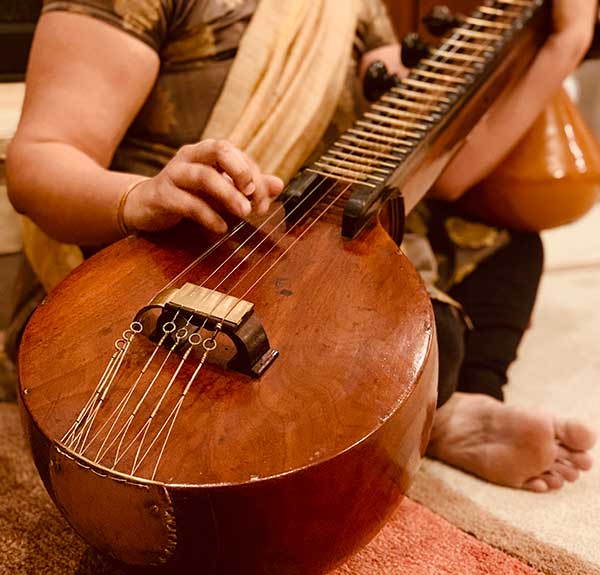
The Significance Of Carnatic Music In Indian Culture And Society
Carnatic music is an integral part of Indian culture and society, with its deep spiritual connection and influence on classical dance forms. Its importance in education and preservation has helped promote traditional music, making it a must-know genre for any lover of Indian classical music.
Religious And Spiritual Importance
As a music lover, it’s hard to miss the significant religious and spiritual importance of Carnatic music in Indian culture. The roots of this tradition go deep into Hindu mythology, where it was believed that the gods and goddesses created this divine art form for their own entertainment.
Temples have always been important venues for Carnatic concerts since they serve as a platform to connect with the divine through music. Listening or participating in concerts held at temples is seen as an act of devotion by many people who believe that the beauty of ragas (melodies) and talas (rhythms) can transport them to a higher spiritual plane.
Connection To Classical Dance Forms
As a music lover, you may already know that classical Indian music is often intertwined with classical dance forms. In fact, Carnatic Music and Bharatanatyam dance are considered the foundations of Indian Classical Arts.
The two art forms have always been closely connected, with each one complementing the other’s artistic expression and beauty.
Moreover, classical Indian dance styles like Kathakali and Kuchipudi use Carnatic Music extensively in their performances. This shows how both art forms play a significant role in preserving South Indian culture and heritage.
Importance In Education And Preservation
For music lovers, Carnatic music is more than just a form of entertainment. This classical Indian music has significant educational and preservation value, playing a crucial role in preserving the South Indian cultural heritage.
Learning Carnatic music is considered an essential part of Indian education as it teaches the importance of discipline, concentration and commitment.
Carnatic music is also seen as an art that must be preserved for future generations to enjoy. Its intricate rhythms, melodic structure and use of improvisation are unique aspects that make it stand out from other forms of Indian classical music.
As such, efforts are being made to create opportunities for younger generations to learn about this style by including Carnatic Music in school curriculums across India.
Role In Promoting Traditional Music
As a music lover, you may wonder about the role of Carnatic music in promoting traditional Indian music. There is no doubt that Carnatic music has been instrumental in preserving and promoting South Indian classical music.
It is considered an unaltered cultural heritage of India, dating back to prehistoric times.
Promoting traditional music like Carnatic music is important not just for preserving culture but also for creating socioeconomic opportunities and empowering local musicians.
In recent years, there has been global interest in this rich musical tradition, which has further contributed to its preservation and promotion. For instance, concerts and festivals featuring Indian classical musicians are held across the world annually.
Conclusion
In conclusion, the rich history of Carnatic music is a testament to South India’s cultural and musical heritage. It has evolved over centuries, integrating various influences while maintaining its classical roots.
The complex rhythms and melodies based on talas and ragas make it a unique form of Indian classical music. Its importance in education, preservation, and promotion of traditional music cannot be overstated.
With the emergence of new genres, styles, and globalization of Carnatic music today, it continues to evolve while preserving its cultural significance.
FAQs:
What is the origin of Carnatic music?
Carnatic music originated in southern India, specifically from the region now known as Tamil Nadu, and was influenced by ancient Indian texts such as the Natya Shastra and Sangeet Ratnakara.
Who were some famous composers in the history of Carnatic music?
Many great composers have played an important role in shaping Carnatic music, such as Purandara Dasa, Tyagaraja, Muthuswami Dikshitar and Syama Sastri who are collectively known as the Trinity of Carnatic Music.
How has technology impacted the presentation of Carnatic music over time?
As technology has advanced over time so too has its impact on how we experience classical art forms like Carnatic music. Today’s performers use digital tools to create new compositions that may include multimedia elements or be shared globally via social media platforms; this means musicians can now reach audiences far beyond their local communities with ease.
Is it necessary to have formal training to appreciate or enjoy Carnatic music?
While a deeper understanding may help listeners recognize certain nuances or lyrics within a composition, anyone can appreciate or enjoy listening to Carnatic performances without prior knowledge – even without understanding all elements involved in creating them! The soothing melodies and intricate rhythms make for a delightful experience that appeals to people across all cultures & languages alike!
Thanks for reading.
TBone

